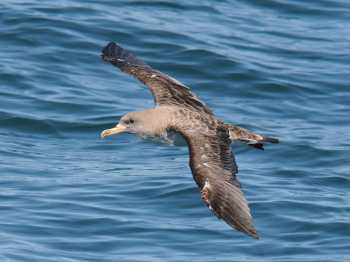April Hedd (Cognitive and Behavioural Ecology, Psychology Department, Memorial University, St. John’s, Newfoundland, Canada) and colleagues have reviewed seabird bycatch in eastern Canadian waters over a 13-year period in the journal Aquatic Conservation: Marine and Freshwater Ecosystems.
The paper’s abstract follows:
- Seabird bycatch in commercial fisheries has been a growing conservation concern over the past 25 years. Large-scale fisheries employing gears known to incidentally catch seabirds operate off eastern Canada, however, regional bycatch information is limited.
- 2. Using data collected from 1998–2011 by observers onboard Canadian domestic and foreign vessels, fishery sectors and target fisheries taking seabirds were identified, as were the seabirds most frequently taken. In addition, maps of seabird bycatch rates were used to identify localized areas where catch rates were high.
- 3. Seabird bycatch was widespread. Despite generally low observer coverage, > 5000 bird deaths were recorded; most observed mortalities occurred in gillnet and longline sectors during summer and autumn. While the overall magnitude of seabird bycatch has likely decreased substantially since closure of the Atlantic cod Gadus morhua and Atlantic salmon Salmo salar gillnet fisheries in 1992, localized areas with high bycatch rates persist.
- 4. For example, in Baffin Bay and Davis Strait, bycatch rates of northern fulmars Fulmarus glacialis were high in gillnet and longline fisheries targeting Greenland halibut Reinhardtius hippoglossoides near breeding colonies. In offshore areas of the Grand Bank, catch rates of migrant shearwaters (Puffinus and Calonectris spp.) were high in deep-set gillnet fisheries for Greenland halibut and monkfish Lophius americanus during summer. In inshore regions of eastern Newfoundland, gillnets set for Atlantic cod near breeding colonies resulted in high bycatch rates of murres Uria spp. and shearwaters during summer. High bycatch rates were also observed in pelagic longline fisheries along the Scotian Shelf.
- 5. While the observer data have highlighted several localized areas with high bycatch rates, information for inshore gillnet fisheries, which take seabirds but are poorly covered by the observer programme, and regional information on fishing effort must both be considered for comprehensive assessment of seabird risk areas and consequent management needs in eastern Canada.

Calonectris shearwater, photograph by John Graha
With thanks to Barry Baker for information.
Reference:
Hedd, A., Regular, P.M., Wilhelm, S.I., Rail, J.-F., Drolet, B., Fowler, M., Pekarik, C. & Robertson, G.J. 2015. Characterization of seabird bycatch in eastern Canadian waters, 1998–2011, assessed from onboard fisheries observer data. Aquatic Conservation: Marine and Freshwater Ecosystems DOI: 10.1002/aqc.2551.
John Cooper, ACAP Information Officer, 30 March 2015

 English
English  Français
Français  Español
Español